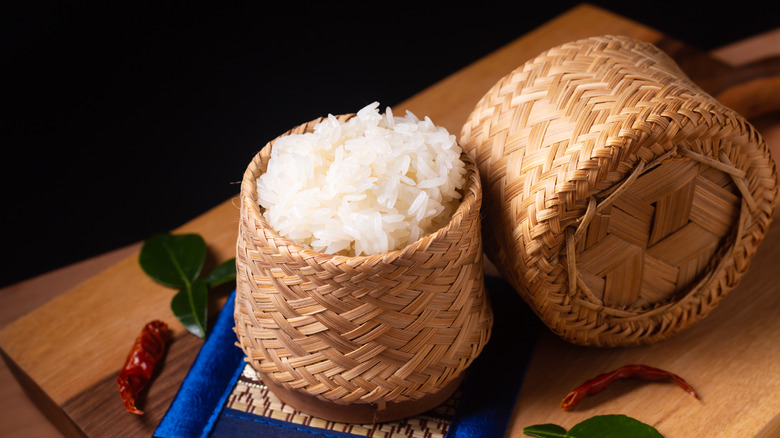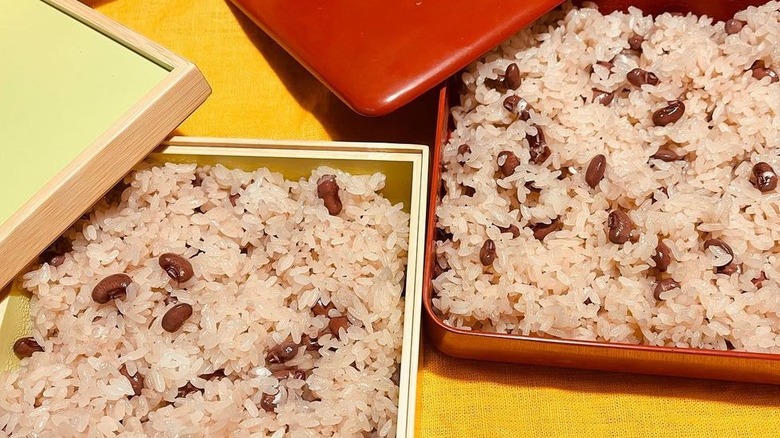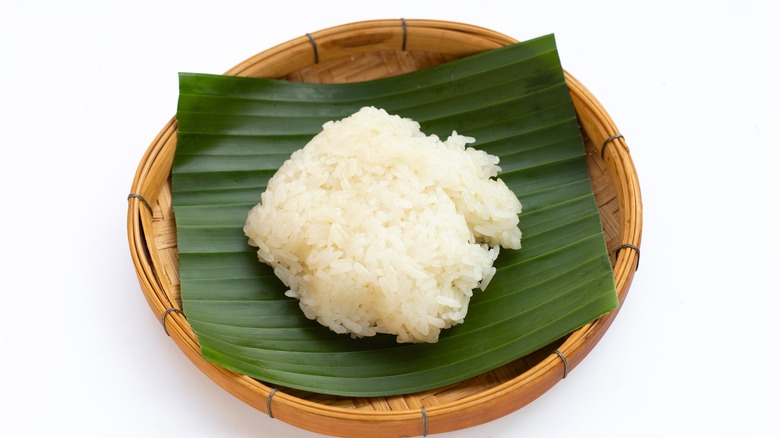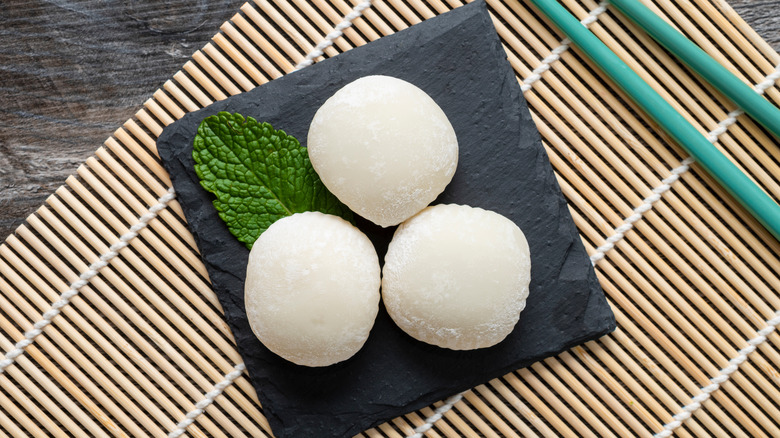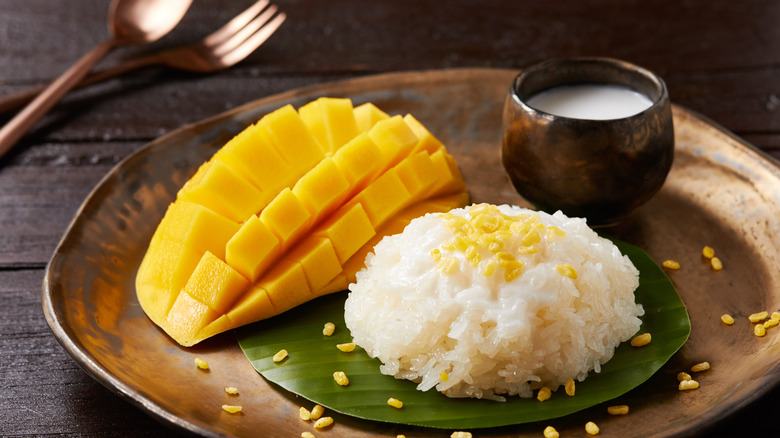When To Use Thai Vs. Japanese Sticky Rice For Sweet Snacks
It wouldn't be a stretch to say Asia's culinary scene would look completely different without sticky rice, which is used across the region in both sweet and savory dishes. The rice is either cooked and consumed as it is or ground into flour to make pastries and desserts, from Japanese mochi in North Asia to kuih in Borneo, Malaysia, and Singapore.
There are three types of sticky rice: a dark-grained varietal which presents a deep purple color after it is cooked, a Japanese glutinous short-grain varietal also known as mochigome, and a long-grain varietal that's generally considered to be Thai but, in fact, grows all over Southeast Asia. And while they all share the same quality of being high in amylopectin (the starch particle that gives the grain its sticky quality when cooked), it would be a mistake to think that the three types of sticky rice can be used interchangeably because they are different ingredients.
What is Japanese sticky rice
If you are only familiar with Japanese sushi rice, you can be forgiven for thinking that and Japanese glutinous rice, also known as mochigome, are one and the same. After all, sushi rice is quite sticky as well, and both are short-grained rice, but mochigome (Oryza sativa, subspecies Japonica) is sweeter and stubbier, with grains that are more opaque than Japanese sushi rice. Mochigome also has very high levels of amylopectin and almost no amylose, the molecule which makes rice starchy.
While most rice is boiled, mochigome is typically soaked for up to a day and then steamed. And even though it is sweet, this glutinous rice can also be used to make savory dishes like Okowa, a Japanese dish served with meat and/or vegetables. Mochigome is also used to make the sekihan, the red bean and rice dish which is served during special occasions, including weddings and celebrations marking a celebrant's 20th birthday.
What is Thai sticky rice
Like Japanese glutinous rice, Thai sticky rice (Oryza sativa, subspecies glutinosa), known locally as khao niao is high in amylopectin. But because it also has low levels of amylose, Thai sticky rice is starchier, which helps it keep its distinct, long-grain shape after it is cooked. For this reason, however, it also needs to be washed until the water used runs clear since the starch that can be found on the rice's surface needs to be rinsed off.
There are several ways to cook up Thai sticky rice — like its Japanese counterpart, it can be steamed, although this varietal is best soaked for between three to four hours beforehand. Thai sticky rice is enjoyed as a side for savory dishes and is commonly eaten with grilled meats. The Chinese use sticky rice to make the lotus-leaf wrapped zongzi enjoyed during the Dragon Boat Festival and as a stuffing for duck. Sticky rice is also prized in Laos, where it is a staple, eaten with everything from curries to dry dishes.
Japanese glutinous rice is only used to make specific wagashi
It is in making desserts that Japanese glutinous rice becomes an indispensable part of the country's cuisine. When mochigome is pounded, it transforms into the only type of flour used to make mochi, the sweet rice dough used to create certain types of wagashi, a range of traditional Japanese sweets. Some, like namagashi, are filled with mashed sweet beans; then there is daifuku, a mochi cake wrapped around a sweet filling. Dango, a sweet presented on skewers, is also made with rice flour, as is oshiruko, a hot sweet bean dessert soup with mochi balls. These sweets are best enjoyed with a cup of Japanese green tea.
Thai sticky rice is used to make a variety of Asian desserts
Thai sticky rice is equally important to the regions where it grows for making desserts. When used whole, Thai sticky rice is the foundation for the classic, coconut-flavored sticky rice with mango dessert; it is also used to make the coconutty Filipino rice dessert known as biko, which is flavored with pandan leaves.
When Thai sticky rice is milled into flour, it can be used to make a variety of chewy East and Southeast Asian desserts. It's the main ingredient for some of Malaysia's brightly colored kuih and Indonesia's traditional desserts, including the brightly colored kue lapis layered rice cake and kue putu, which is steamed in bamboo tubes. Glutinous rice flour is the main ingredient for nien gao, or lunar new year cakes, and it's used to make a range of Filipino desserts, from the sweet rice cake palitaw to the Filipino version of kue lapis, sapin sapin, a colorful layered rice cake.
Because of the unique chemical structure of Thai sticky rice flour, none of these treats can be made with Japanese glutinous rice flour, just as mochi cannot be made with the former.
